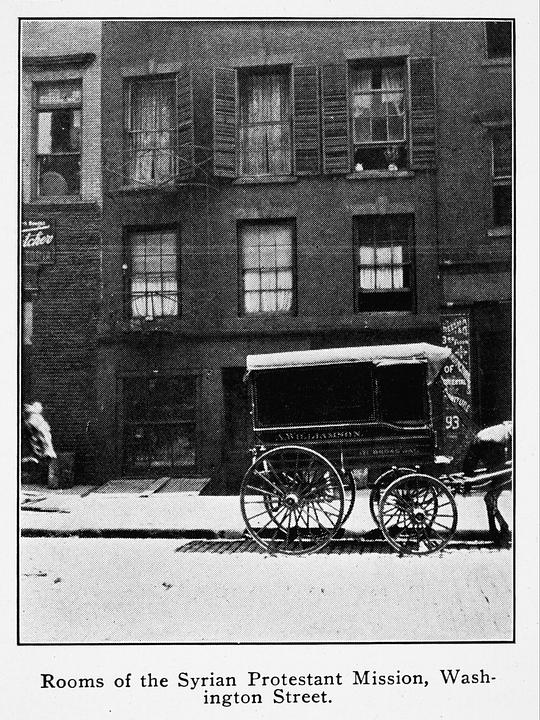The first Arabic-speaking priest assigned to the burgeoning Syrian colony was Khalil Beshewate, a Melkite, who presided over his first service on Christmas Eve, 1889. The Maronite priest, Peter Korkemas, arrived shortly after. Accompanying Korkemas was Joseph Yazbek, who became the first Maronite priest to be ordained in America. Orthodox Archmandrite Raphael Hawaweeny arrived in New York from Russia in 1895.
At first the different congregations met in American churches, but once the priests arrived, each congregation wanted its own chapel. They formed benevolent associations to raise money to convert a commercial space on Washington Street to a chapel. All succeeded except the Melkites, who continued to meet in the basement of St. Peter's Catholic Church on Barclay Street until 1914. The Maronites fitted out a chapel on the second floor of 81 Washington Street in 1893, the Orthodox did the same at 77 Washington in 1895, and the Protestants began to meet upstairs at 95 Washington with members of the congregation serving as lay ministers.
Since they were the only Arabic-speaking priests in the United States, their responsibilities included ministering to Syrians living in other parts of the country. They traveled around for up to six months a year, performing the liturgy and presiding over weddings and baptisms in farflung Syrian communities. These communities would delay their rites until the Syrian priest arrived. The priests also used these trips to raise money to build permanent churches in New York City, but this was not possible until the New York Syrian community became prosperous enough to purchase buidings in Brooklyn.
Tenuous evidence for a small Muslim population was the establishment in 1912 of a Muslim "prayer hall" on Greenwich Street, one block east of Washington Street. Nothing more is known about this hall or the Muslims who might have used it.
At first the different congregations met in American churches, but once the priests arrived, each congregation wanted its own chapel. They formed benevolent associations to raise money to convert a commercial space on Washington Street to a chapel. All succeeded except the Melkites, who continued to meet in the basement of St. Peter's Catholic Church on Barclay Street until 1914. The Maronites fitted out a chapel on the second floor of 81 Washington Street in 1893, the Orthodox did the same at 77 Washington in 1895, and the Protestants began to meet upstairs at 95 Washington with members of the congregation serving as lay ministers.
Since they were the only Arabic-speaking priests in the United States, their responsibilities included ministering to Syrians living in other parts of the country. They traveled around for up to six months a year, performing the liturgy and presiding over weddings and baptisms in farflung Syrian communities. These communities would delay their rites until the Syrian priest arrived. The priests also used these trips to raise money to build permanent churches in New York City, but this was not possible until the New York Syrian community became prosperous enough to purchase buidings in Brooklyn.
Tenuous evidence for a small Muslim population was the establishment in 1912 of a Muslim "prayer hall" on Greenwich Street, one block east of Washington Street. Nothing more is known about this hall or the Muslims who might have used it.










